#Aegean region
Explore tagged Tumblr posts
Text
Deniz gördüğüm zaman içim mutluluk doluyor böyle o kadar pozitif enerjiyle doluyorum ki anlatamam.💙💫 Bir hafta önceki Eğitim Gezisinde çektiğim fotoğraflardan. Beni huzurlu hissettiren nadir şeylerden olduğu için sizinle de paylaşıyorumm ✨🍀


📸
Ocak 2024
5 notes
·
View notes
Photo
...ancient history ♡
.
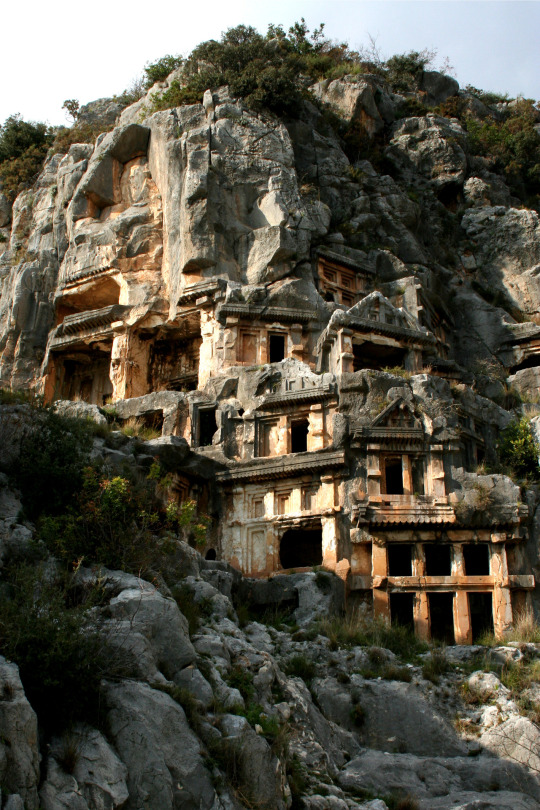
The rock-cut out tombs of Mrya, located a few kilometers from Demre in the Anatolian region of Turkey.
77K notes
·
View notes
Text

Symi, Greece: Symi, also transliterated as Syme or Simi is a Greek island and municipality. It is mountainous and has the harbour town of Symi and its adjacent upper town Ano Symi, as well as several smaller population centres, beaches and areas of significance in history and mythology. Symi is part of the Rhodes regional unit. The economy of Symi was traditionally based on the shipbuilding and sponge industries. Symi's main industry is now tourism. Wikipedia
352 notes
·
View notes
Text

Chios, North Aegean, Greece.
160 notes
·
View notes
Text


#the odyssey along with the Iliad are The literary works that ancient greek culture-- arts worldview cosmology morality-- developed around#as well as works that created the idea of a greek identity and an aegean/mediterranean history from the fragmentary traditions and memories#of the bronze age and earlier that managed to survive through the fucking dark age#if chaucer and the bible had a baby that's how important these works were for greek identity and understanding of themselves and the world#the odyssey on it's own is an incredible preservation of regional folk tales and trickster culture heroes#and a priceless glimpse into ancient greek understanding of their past as well as the political and social structures of the archaic period#and also an incredibly pioneering narrative structure that mimics the circular travels of its protagonist with its non-linear format#if a forgettable children's book series that doesn't even represent the mythology well is That for you then you need help frankly#and if it's not then shut up about it already#(just say you're a 28 year old with a 4th grade reading level and go)#like I dislike these books for a variety of reasons but it's takes like this that make me HATE them#SHUT UP about these GODDAMN BOOKS#greek mythology#ancient greece#anti pjo#anti percy jackson#lore and more
23 notes
·
View notes
Text
Sfouggato (I.E. Greek Style Baked Omelet) With Spinach, Zucchini, Feta And Trahana
🧽
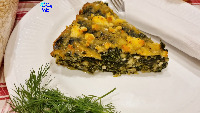
Sfouggato (i.e. Greek style baked omelet) with Spinach, Zucchini, Feta and Trahana - Sfouggato me Spanaki, Kolokythi, Feta kai Trahana
BY: Greek Cooking Made Easy
SUBSCRIBE TO MY YOUTUBE CHANNEL: https://www.youtube.com/greekcookingmadeeasy
Check My YouTube Video: HERE
Κοιτάξτε Επίσης Την Συνταγή Μου Σε YouTube Βίντεο, Το Λίνκ Είναι: ΕΔΩ
youtube
SERVES 🍴⃒ PREP. TIME 🕔⃒
4 pers. for lunch or 40 min.
6 for brunch
COOK. TIME ♨ DIFFIC. LEVEL 👩🍳⃒
30-35 min. Fairly Easy
Sfouggato (or sfougato) is the Greek word we had before adopting the word omelet, and which is still used, for the very old food made from beaten fried eggs with vegetables or otherwise a "crustless pie that looks like a sponge''.
Mainly an Aegean islands dish, it is very popular and prepared all over Greece using a variety of ingredients.
Not really an omelet or Kayiana (strapatsada) or Frittata, Quiche or Froutalia but a similar dish that stands proudly on its own. This recipe combines eggs with spinach, zucchini, crumbled feta cheese and Trahana, another ancient food.
The result is a spongy type of "baked omelet" filled with a great combo of tart and vegetable flavors plus the earthy taste of trahana. A delicious, filling pairing.
Intrigued to learn how to prepare it? Let me show you how.
Suitable for lacto-ovo vegetarians
INGREDIENTS:
· 500 gr. /1 lb 2 oz fresh Wild Spinach-washed, drained, coarsely chopped
· 300 gr. / 10.5 oz or 1 large Zucchini, mushed
· 150 gr. / 5.5 oz Feta cheese, crumbled
· 75 gr. / 2.75 oz Trahana, sour variety
· 2 large Eggs
· 2 tbsp. / 30 ml Olive Oil
· 1 medium Onion, finely chopped
· 2-3 Spring Onions, mashed in food processor
· 3/4 bunch fresh Dill, mashed in food processor
· 1.5 tbsp. / 15 gr. / 0.5 oz Cornmeal
· Ground Salt and pepper
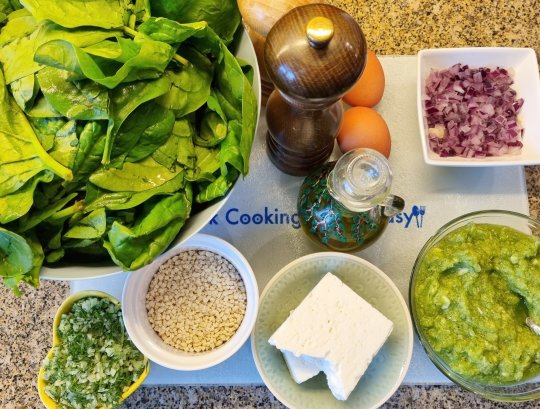
METHOD:
A. Prepare the ingredients for Sfougato:
1. Wash well and strain the fresh wild spinach. Leave them for a while for the water to drain.
2. Pour the Olive oil into a deep pot over medium-high heat.
3. When it heats up, sauté first the chopped onion for 2'.
4. Then add the spinach leaves and sauté them for about 5' or until you see that the spinach has shrunk to 1/8 of its original size.
5. Add the mashed zucchini and blend it with the spinach.
6. Reduce heat and add trahana, tossing to mix it with the veggies.
7. Season with ground Pepper and Salt (not too much salt, because you will add all the feta cheese later!)
8. Keep cooking for 10'-12' more, or until trahana absorbs most of the water from the vegetables.
9. Then turn off the heat. Place the cooked mix aside to help it cool down a bit.
B. Assemble Sfougato:
10. Brush or spray some oil in a round fireproof dish of 22-23 cm / 8.7-9 in. Use 2/3 of the corn meal to flour the bottom and sides of the dish. Reserve the rest.
11. In a large bowl, crack the eggs and whisk them well.
12. Now add the mashed spring onions with dill into the beaten eggs, and whisk to mix them.
13. Gradually add the cooled, boiled spinach mixture in the egg mix and with a large spoon blend all ingredients, making sure the egg mix goes everywhere.
14. Crumble 2/3 of the feta cheese between your fingers and blend it in the Sfougato mix.
15. Tip Sfougato mix in the oven dish; crumble the rest of feta cheese and sprinkle it all around the top of the dish.
16. To finish, sprinkle the rest of corn meal on top of Sfougato and season with ground Pepper only.
17. Ready for baking, not so hard was it!?
C. Baking instructions:
18. Bake Sfougato in a preheated oven, FAN @190℃ / 375℉ for about 30'-35' or until it turns golden (depends on the oven).
19. After 35', remove Sfougato from the oven.

D. Serving instructions:
Ready to be cut and served. Sfougato can be enjoyed warm or chilled, and it makes for an excellent brunch or meze dish accompanied by a glass of ouzo or raki on the rocks.

A simple, deliciously rustic, healthy, inexpensive dish for the whole family!
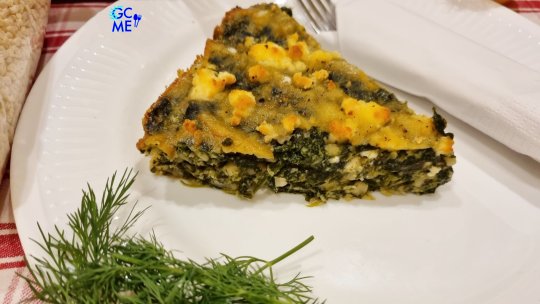
Traditional Greek style "omelet", filled with greens, tangy feta and earthy trahana.

Delicious simplicity on a plate!
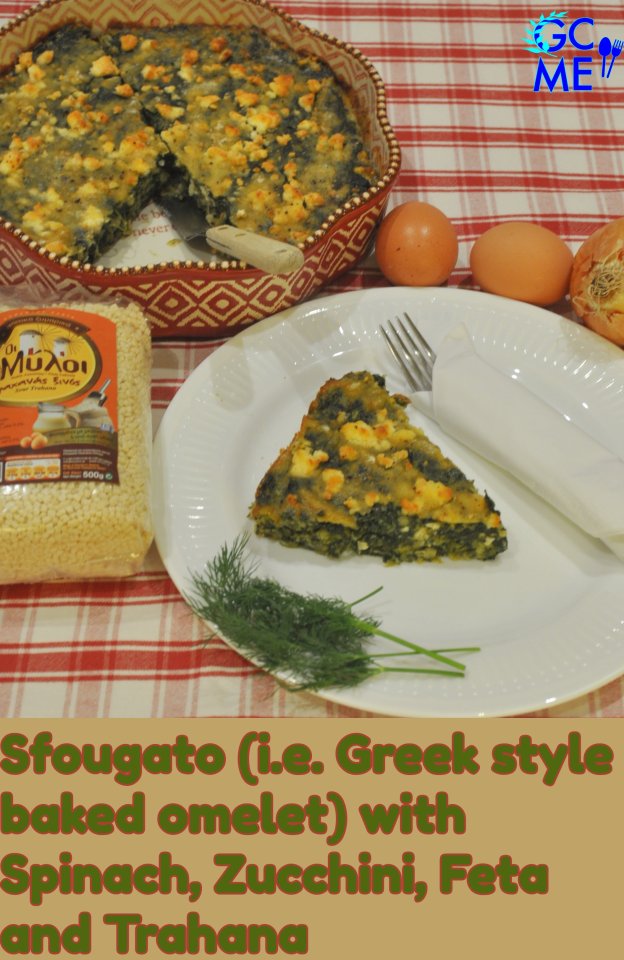
E. Storage info:
After baking, cooled Sfougato can be stored in the fridge (covered), for up to a week.
F. More info and history of Sfougato:
The word "Sfougato" comes from the ancient Greek word sphongos or spongia, i.e. sponge. And that's because beaten eggs (along with vegetables) have a sponge texture.
The word has existed at least since medieval times - in Ptochoprodromos we find sfougato as well as double sfougato. In a later text, by Damascene Studitis (from the 16th century), we also have the definition of sfougato in a language very similar to today's: "don't you know what sfougato is? Eggs crushed and fried with onions and other herbs".
Its origin can be traced to the islands of the Aegean, with eggs, onions and zucchini as the main ingredients, and its name predates centuries before the French word omelet entered our lives.
A traditional version of the Greek sfougato recipe is the "Smyrna Sfougato" as it was brought by the refugees and was misunderstood as a "gourmet" recipe due to the influence of the Italian occupation of the Dodecanese islands.
In the accounts of West Coast refugees, it is mentioned as an imported Italian gourmet along with "granita", perhaps because of the Italian pronunciation of its name ending in -ato like "gelato".
Sfougato has nothing to do with strapatsada and kayanas and exists in many versions and variations with a range of ingredients.
With excerpts from:
*https://thryallida.wordpress.com/2020/10/26
*https://el.wikipedia.org/wiki/%CE%9F%CE%BC%CE%B5%CE%BB%CE%AD%CF%84%CE%B1

Check my similar recipe for Easy Spinach Tart: HERE
Check my YouTube Video: HERE

Σφουγγάτο με Σπανάκι, Κολοκύθι, Φέτα και Τραχανά
BY: Greek Cooking Made Easy
SUBSCRIBE TO MY YOUTUBE CHANNEL: https://www.youtube.com/greekcookingmadeeasy
ΜΕΡΙΔΕΣ🍴⃒ ΠΡΟΕΤΟΙΜΑΣΙΑ 🕔⃒
4 για μεσημεριανό 40 min.
ή 6 για μπράντς
ΜΑΓΕΙΡΕΜΑ ♨ ΒΑΘΜ. ΔΥΣΚΟΛΙΑΣ 👩🍳⃒
30-35 min. Σχετικά Εύκολο
Το Σφουγγάτο είναι η ελληνική λέξη που είχαμε, πριν υιοθετήσουμε τη λέξη ομελέτα, και η οποία χρησιμοποιείται ακόμα, για αυτό το πολύ παλιό φαγητό που φτιάχνεται από χτυπημένα τηγανητά αυγά με λαχανικά ή αλλιώς «πίτα χωρίς ζύμη ή φύλλο που μοιάζει με σφουγγάρι».
Κυρίως πιάτο των νησιών του Αιγαίου, είναι πολύ δημοφιλές και παρασκευάζεται σε όλη την Ελλάδα με ποικιλία υλικών.
Δεν είναι ομελέτα ούτε καγιανάς (στραπατσάδα), ούτε φριτάτα, κις ή φρουτάλια αλλά ένα παρόμοιο πιάτο που όμως στέκεται περήφανα από μόνο του. Η συγκεκριμένη συνταγή συνδυάζει αυγά με σπανάκι, κολοκύθι, τριμμένη φέτα και τραχανά, ένα ακόμα αρχαίο φαγητό.
Το αποτέλεσμα είναι μια σπογγώδης "ομελέτα" φούρνου γεμάτη με έναν υπέροχο συνδυασμό αλμυρών γεύσεων και λαχανικών συν τη γήινη γεύση του τραχανά. Ένα πεντανόστιμο, χορταστικό ταίριασμα.
Ενδιαφέρεστε να μάθετε πώς φτιάχνεται; Πάμε να σας δείξω πώς.
Κατάλληλο για χορτοφάγους
ΥΛΙΚΑ:
• 500 γρ. /1 lb 2 oz φρέσκο άγριο Σπανάκι πλυμένο, στραγγισμένο, χοντροκομμένο
• 300 γρ. / 10,5 oz ή 1 μεγάλο Κολοκύθι, πολτοποιημένο
• 150 γρ. / 5,5 oz τυρί Φέτα, τριμμένη
• 75 γρ. / 2,75 oz Τραχανάς, ξινός
• 2 μεγάλα Αυγά
• 2 κ.σ. / 30 ml Ελαιόλαδο
• 1 μέτριο, ξερό Κρεμμύδι, ψιλοκομμένο
• 2-3 φρέσκα Κρεμμυδάκια, πολτοποιημένα στο μούλτι (πολυκόφτη)
• 3/4 ματσάκι φρέσκος Άνηθος, πολτοποιημένος στο μούλτι
• 1,5 κ.σ. / 15 γρ. / 0,5 oz Καλαμποκάλευρο
• Φρεσκοαλεσμένο αλάτι και πιπέρι

ΜΕΘΟΔΟΣ:
Α. Ετοιμάστε τα υλικά για το Σφουγγάτο:
1. Πλύντε καλά και σουρώστε το φρέσκο σπανάκι. Αφήστε το για λίγο να στραγγίσει καλά από το νερό.
2. Ρίξτε το ελαιόλαδο σε μια βαθιά κατσαρόλα πάνω από μέτρια προς δυνατή φωτιά.
3. Μόλις ζεσταθεί, σοτάρετε πρώτα το ψιλοκομμένο ξερό κρεμμύδι για 2'.
4. Στη συνέχεια προσθέστε τα φύλλα σπανακιού και σοτάρετε τα για περίπου 5' ή μέχρι να δείτε ότι το σπανάκι έχει συρρικνωθεί στο 1/8 του αρχικού του μεγέθους.
5. Προσθέστε το πολτοποιημένο κολοκύθι και ανακατέψτε το με το σπανάκι.
6. Χαμηλώστε τη φωτιά και προσθέστε τον τραχανά ανακατεύοντας να ενωθεί με τα λαχανικά.
7. Προσθέστε φρεσκοαλεσμένο πιπέρι και αλάτι (όχι πολύ αλάτι, γιατί θα προσθέσετε και τη φέτα αργότερα!)
8. Συνεχίστε το μαγείρεμα για 10'-12' ακόμη, ή μέχρι ο τραχανάς να απορροφήσει το μεγαλύτερο μέρος από το νερό των λαχανικών.
9. Στη συνέχεια σβήστε τη φωτιά. Αφήστε το ψημένο μείγμα στην άκρη να κρυώσει λίγο.
B. Συναρμολογήστε το Σφουγγάτο:
10. Βουρτσίστε ή ψεκάστε λίγο λάδι σε ένα στρογγυλό πυρίμαχο σκεύος 22-23 εκ. / 8,7-9 ίντσες. Χρησιμοποιήστε τα 2/3 του καλαμποκάλευρου για να αλευρώσετε τον πάτο και τα πλαϊνά του σκεύους. Κρατήστε το υπόλοιπο στην άκρη.
11. Σε ένα μεγάλο μπολ σπάστε τα αυγά και χτυπήστε τα καλά με τον αυγοδάρτη.
12. Τώρα προσθέστε τα πολτοποιημένα φρέσκα κρεμμυδάκια με τον άνηθο μέσα στα χτυπημένα αυγά και χτυπήστε τα μαζί να ανακατευτούν.
13. Προσθέστε σταδιακά το βρασμένο μείγμα σπανακιού στο μείγμα των αυγών και με μια μεγάλη κουτάλα ανακατέψτε όλα τα υλικά, φροντίζοντας το μείγμα των αυγών να πάει παντού.
14. Θρυμματίστε τα 2/3 της φέτας με τα δάχτυλά σας και ανακατέψτε τα μέσα στο μείγμα για Σφουγγάτο.
15. Χύστε το Σφουγγάτο κατόπιν μέσα στο ταψί. Θρυμματίστε την υπόλοιπη φέτα και πασπαλίστε τη πάνω από το σφουγγάτο.
16. Για να τελειώσετε, πασπαλίστε το υπόλοιπο καλαμποκάλευρο πάνω από το σφουγγάτο και προσθέστε μόνο λίγο ακόμα πιπέρι.
17. Έτοιμο για ψήσιμο, δεν ήταν και τόσο δύσκολο, έτσι!;
Γ. Οδηγίες ψησίματος:
18. Ψήστε το Σφουγγάτο σε προθερμασμένο φούρνο, στον αέρα @190℃ / 375℉ για περίπου 30'-35' ή μέχρι να ροδίσει (εξαρτάται από τον φούρνο).
19. Μετά από 35' βγάλτε το Σφουγγάτο από το φούρνο.

Δ. Οδηγίες σερβιρίσματος:
Έτοιμο για κοπή και σερβίρισμα. Το Σφουγγάτο μπορείτε να το απολαύσετε ζεστό ή και κρύο και αποτελεί ένα εξαιρετικό brunch ή μεζέ συνοδευόμενο από ένα ποτήρι ούζο ή ρακή με πάγο.

Απλό, υπέροχα χωριάτικο, υγιεινό και φθηνό φαγητό για όλη την οικογένεια!

Παραδοσιακή Ελληνική "ομελέτα", γεμάτη χόρτα, πικάντικη φέτα και γήινο τραχανά.

Νόστιμη απλότητα σε ένα πιάτο!

Ε. Πληροφορίες φύλαξης:
Μετά το ψήσιμο, το κρύο Σφουγγάτο μπορεί να διατηρηθεί στο ψυγείο (σκεπασμένο), έως και μια εβδομάδα.
Ζ. Περισσότερες πληροφορίες και ιστορία του Σφουγγάτου:
Η λέξη “Σφουγγάτο” προέρχεται από την αρχαία Ελληνική λέξη σφόγγο ή σπογγιά δηλ. το σπόγγο. Και αυτό γιατί τα χτυπημένα αυγά (μαζί με λαχανικά) έχουν όψη σφουγγαριού.
Η λέξη υπάρχει τουλάχιστον από τα μεσαιωνικά χρόνια -στον Πτωχοπρόδρομο βρίσκουμε σφουγγάτα αλλά και διπλοσφουγγάτα. Σε ένα μεταγενέστερο κείμενο, του Δαμασκηνού Στουδίτη (του 16ου αιώνα), έχουμε και τον ορισμό του σφουγγάτου σε γλώσσα πολύ όμοια με τη σημερινή: "το δε σφουγγάτον ηξεύρετε τι είναι; αυγά συντετριμμένα και τηγανισμένα με κρομμύδια και άλλα μυρωδικά".
Η προέλευ��ή του εντοπίζεται στα νησιά του Αγαίου, με κύρια υλικά τα αυγά, τα κρεμμύδια και τα κολοκυθάκια, και η ονομασία του προηγείται χρονικά κάτι αιώνες πριν μπει στη ζωή μας η γαλλική λέξη ομελέτα.
Μια παραδοσιακή εκδοχή της συνταγής του ελληνικού σφουγγάτου είναι και το Σφουγγάτο Σμύρνης όπως αυτή μεταφέρθηκε από τους πρόσφυγες παρεξηγημένα σαν μια ‘’γκουρμέ’’ συνταγή από την επιρροή της ιταλικής κατοχής των Δωδεκανήσων.
Σε μαρτυρίες προσφύγων των δυτικών παραλίων αναφέρεται ως ένα εισαγόμενο ιταλικό γκουρμέ παράλληλα με τη ‘’γρανίτα’’, ίσως λόγω της ιταλικής εκφοράς της ονομασίας του που λήγει σε –άτο όπως το ‘’τζελάτο’’.
Δεν έχει καμία σχέση με τη στραπατσάδα και τα καγιανά και υπάρχει σε πολλές εκδοχές και παραλλαγές με διαφορετικά υλικά.
Το σφουγγάτο είναι ένα έδεσμα που μπορεί να συναντήσει κανείς σε πολλά μέρη της Ελλάδας, ως τοπικό όμως έδεσμα με σημαντική παρουσία στις τοπικές κουζίνες συναντάται κυρίως στη Λέσβο και την Σαντορίνη. Οι τρόποι παραγωγής του και οι παραλλαγές ποικίλουν.
Με αποσπάσματα από:
*https://thryallida.wordpress.com/2020/10/26
*https://el.wikipedia.org/wiki/%CE%9F%CE%BC%CE%B5%CE%BB%CE%AD%CF%84%CE%B1

Δείτε την παρόμοια συνταγή μου για Εύκολη Τάρτα με Σπανάκι: ΕΔΩ
Κοιτάξτε επίσης την συνταγή μου σε YouTube βίντεο, το λίνκ είναι: ΕΔΩ

#Youtube#meze#lunch#pie#vegetables#vegetarian#egg#cheese#lowcost#children#keto#region#aegean#ancient#sfouggato#sfougato#sfouggato recipe#greek baked omelet#σφουγγατο#σφουγγάτο#σφουγγατο ομελετα
5 notes
·
View notes
Text
someone throw me to the fucking Mediterranean I am not made for this season...
#curse of being born in one of the coldest regions in this country#i should have born in one of the aegean towns fr
7 notes
·
View notes
Text
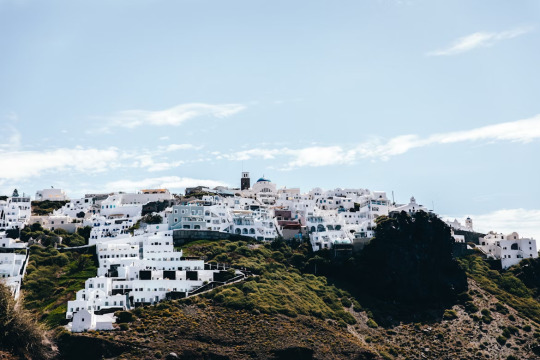

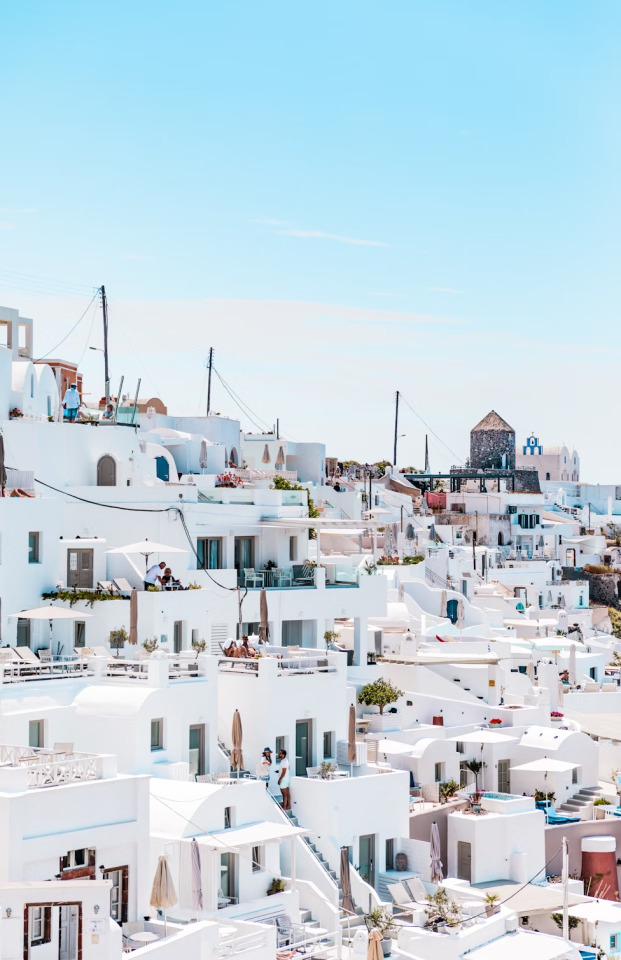

Santorini, South Aegean Region, Greece
Andre Benz
3 notes
·
View notes
Text
BEYONDTRAVEL - PRO+
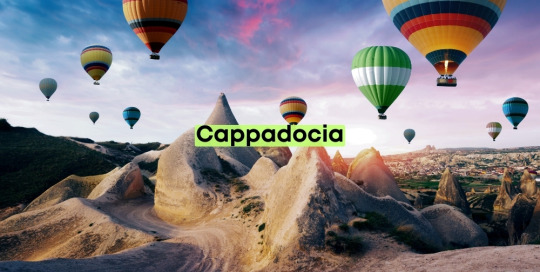
Explore Turkey's Wonders with Beyond Travel
Beyond Travel stands as a prominent travel agency in Turkey, dedicated to providing unforgettable holiday experiences. Offering a wide range of options such as Istanbul tours, Cappadocia tours, Bursa tours, and more, Beyond Travel serves as the perfect gateway to exploring Turkey's most sought-after tourist destinations. Here's what Beyond Travel has to offer:
Istanbul Tour:
Embark on a journey through the rich history and vibrant culture of istanbul tour with Beyond Travel. Visit iconic landmarks such as Hagia Sophia, Topkapi Palace, and the Blue Mosque as you immerse yourself in the enchanting atmosphere of this historic city.
Cappadocia Tour:
Discover the breathtaking natural beauty of Cappadocia with Beyond Travel's specialized tours. From hot air balloon rides over the fairy chimneys to exploring underground cities, Cappadocia tour offers a truly magical experience that will leave you in awe.
Airport Transfer:
Experience comfortable and reliable airport transfer with Beyond Travel, serving various airports across Turkey. Whether you're arriving in Istanbul, Ankara, or Antalya, Beyond Travel ensures seamless transportation to your hotel or tourist destination.
Turkey Tours:
Explore the diverse landscapes and rich cultural heritage of Turkey with Beyond Travel's curated turkey tours. Sail the turquoise waters of the Aegean Sea, venture into the mystical forests of the Black Sea region, or unwind on the sun-kissed beaches of the Mediterranean coast. Beyond Travel offers a variety of options to suit every traveler's preferences.
Bursa Tour:
Discover the historic city of Bursa tour, known for its stunning architecture, rich history, and natural beauty. Explore ancient landmarks, visit the famous Green Mosque and Green Tomb, and indulge in the city's renowned cuisine with Beyond Travel's Bursa tours.
Beyond Travel invites you to embark on an unforgettable journey through Turkey's wonders. With professional guides and personalized service, Beyond Travel ensures that every moment of your trip is filled with joy and discovery. Explore Turkey's enchanting atmosphere with Beyond Travel and create memories that will last a lifetime.
1K notes
·
View notes
Text

Statue Discovered at Greece’s Ancient Site of Philippi
A large public building with a statue depicting a young male built onto its wall, workshops, residences and thermal baths are only some of the new and glorious discoveries that have been recently unearthed at the archaeological site of ancient Philippi in northern Greece.
The ancient structures were discovered by archaeologists during ongoing works to install a fire safety and water distribution network at the sprawling site. The finds will shed even more light on the secrets and the past glory of the ancient city of Philippi, established in 356 BC by the King of Macedon and father of Alexander the Great, Philip II.
Archaeologists have long believed that Philippi was adorned by magnificent buildings and that the city had gained extraordinary fame after its establishment. During the current works at the Philippi site a geophysical method capable of detecting buried walls while guiding the pipelines without disturbing any of the antiquities was employed.

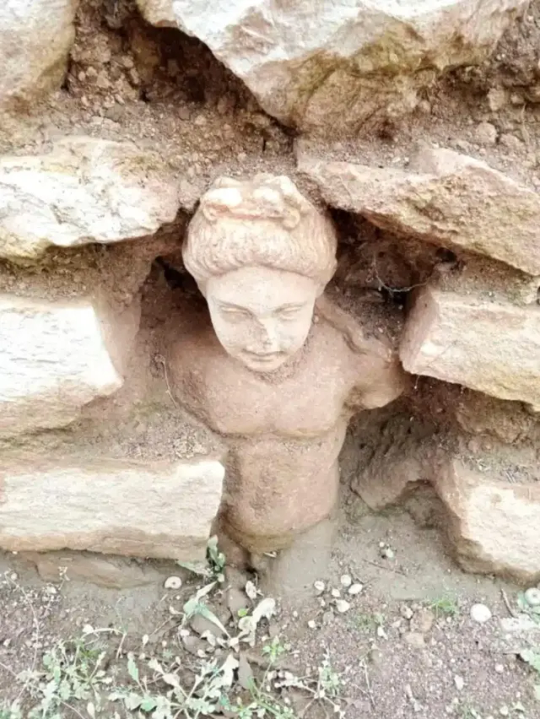

The ancient city of Philippi
Philippi was established in 356 BC by the King of Macedon, Philip II, on the site of the Thasian colony of Crenides near the head of the Aegean Sea. It developed as a “small Rome” with the establishment of the Roman Empire in the decades following the Battle of Philippi in 42 BC. Centuries later, it was abandoned after the Ottoman conquest of the 14th century. The present municipality of Filippoi is located near the ancient city’s ruins and is part of the region of East Macedonia and Thrace in Kavala, Greece.
The ancient city is currently the most vital archeological site in the region. However, the first excavations did not begin until the summer of 1914 and were soon interrupted by World War I. Between 1920 and 1937, archeologists unearthed the Greek theater, forum, baths and city walls. Following World War II, Greek archeologists returned to the site, uncovering multiple public buildings.
By Filio Kontrafouri.
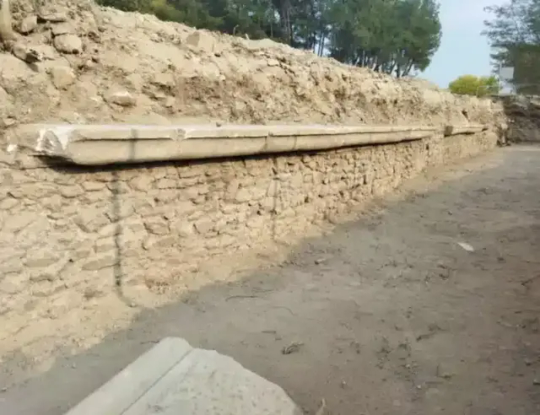
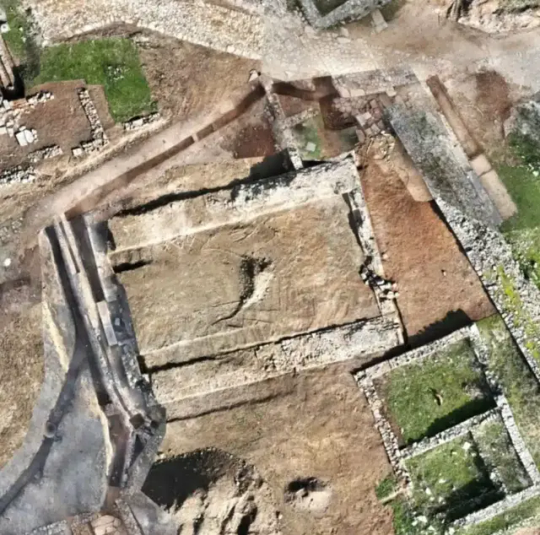
#Statue Discovered at Greece’s Ancient Site of Philippi#ancient city of Philippi#statue#ancient statues#ancient sculpture#ancient artifacts#archeology#archeolgst#history#history news#ancient history#ancient culture#ancient civilizations#ancient greece#greek history#greek art#ancient art
45 notes
·
View notes
Photo

This map illustrates the geopolitical evolution in the Aegean during the Bronze Age when the dominant civilizations of the region - the Minoans and Mycenaeans- played distinct roles. The Minoans (2000–1450 BCE) on Crete were renowned for their maritime trade, elaborate palaces like Knossos, and sophisticated art, while the Mycenaeans (1600–1100 BCE) were more militaristic, building fortified citadels...
54 notes
·
View notes
Text
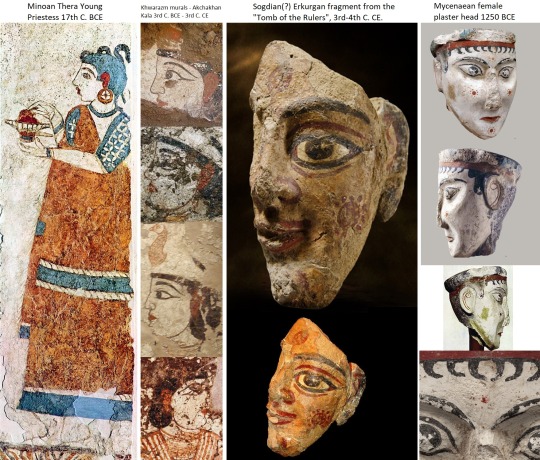
Comparison of Minoan, Mycenaean, Sogdian, & Khwarazm artworks 17th C. BCE - 4th C. CE
When I came across the Khwarazm (aka Chorasmian) murals I remembered this red-eared priestess from Thera. Their large eyebrows, red-painted ears, extremely light skin tone, and general facial features look very similar to each other despite being over 1,000 years apart and in different regions of the world. Other than that their clothing, jewelry, and hairstyle are quite different. I couldn't figure out what the significance of the red ears were, though Jason Earle speculates it might be an artistic depiction of a person hearing something divine from a deity (Cosmetics and Cult Practices in the Bronze Age Aegean? A Case Study of Women with Red Ears). These are the only images I've come across, that I can recall, of people with their ears painted red so I felt like comparing them.
The Erkurgan fragment has red solar symbols very similar to the Mycenaean plaster head. Again these two pieces of art are over 1,000 years apart and in different geographic locations. I don't know who the Erkurgan fragment should be attributed to, but this was a place in the heart of Sogdiana. I assume it represents a Sogdian because of location and time period, but that's just my assumption. Solar symbols appear in basically all civilizations, but I've never come across these specific red styled ones (that I can recall) except in these two instances. In both instances they appear on the cheeks, forehead, and probably the chin (the Erkurgan fragment's chin is damaged but seems to have some red paint). Again, seeing this unique symbol made me feel I should compare the two. From what I've read all the images here are generally thought to be depictions of females with religious significance.
#minoan#mycenaean#art history#ancient history#ancient#art#antiquities#history#paganism#pagan#goddess#priestess#indo european#ancient art#archaeology#anthropology#sogdiana#ancient greece
295 notes
·
View notes
Photo

The Turks in the Balkans: The Battle of Kosovo, 1389.
« Atlas des guerres au Moyen Âge », Loïc Cazaux, Autrement, 2024
by cartesdhistoire
The Turkish advance in the Balkans represents a fundamental step for the stabilization of the Ottoman Sultanate.
In Europe, besides their fragile control of the Bosphorus, the Byzantines only retain a few small, scattered territories threatened by Turkish expansion.
In Pontus, the Greek Empire of Trebizond, founded in 1204, stands as a separate entity alongside Constantinople, despite late medieval agreements between the two Byzantine states. It will collapse in 1461 in the face of the Ottoman Sultan Mehmet II.
In Albania and the Peloponnese, the Byzantines are no longer able to impose regional order. During the 14th century, the former Greek despotate of Epirus is divided among the Byzantines, Latins (Italians), Albanians, and Serbs. It will also be conquered by the Ottomans in the 15th century.
Finally, thanks to Stephen Dushan, a short-lived Serbian empire was established between the 1340s and 1370s. It came together by exploiting regional dissensions. However, it did not constitute a counterweight to the decline of Byzantine strength and the continuation of Ottoman expansion. The empire collapsed too quickly, failing to consolidate its unity and establish solid foundations. In this sense, it gave way to the western offensive of the Turks toward Serbia, which led to the Battle of Kosovo, or the "Field of Blackbirds" (June 15, 1389), on a plain north of Skopje, delivering the final blow to Serbian resistance.
The Serbs now formed a submissive people who had to fight for the Turks. From their Balkan positions, the Ottomans set up a double objective: to the south, towards the Peloponnese, in order to reach the Byzantine despotate of Morea and strengthen their control of the passages to the Aegean Sea, and to the north, to consolidate their control of the Danube valley, an essential axis toward the Black Sea. For this, Wallachia was attacked, conquered, and put under tribute in 1394-1395.
55 notes
·
View notes
Text

Theseus #7 (the Black Sail) Theseus, still heartsick from the loss of his new love, journeys back to Athens to reunite with his father. But in his grief, Theseus forgets his father’s order; to change the black sail of his ship to white, signaling that he has survived. King Aegeus, seeing the black sail and becoming overwhelmed with despair at the death of his son, leaps from a cliff to his death into the sea. And forever after, in honor of the king, the sea there has been known as the Aegean Sea. Theseus, being the heir, is crowned King of Athens, and his reign ushers in a period of prosperity, political unification, and the creation of the Panathenaea Festival and Ismeian Games. Theseus is credited with implementing Synoecism; political unification of the surrounding twelve Poleis (city-states) of Attica (region of surrounding peninsula countryside towns) to the centrally unified city-state of Athens. This unification paved the way for the seeds of political democracy. During this time the Athens became more diverse with the acceptance of foreigners and strengthening of the maritime trading port.
The Panathenaea was an annual festival to honor Athena; patron goddess of Athens. There was a large procession through the city, cutting through the Agora (central public square for markets and assembly) ending at the top of the Acropolis (elevated hill citadel) where animals would be sacrificed and a lavish embroidered robe offered to Athena in the Parthenon (temple for Athena). We can still see the festival figures of the procession carved upon the frieze of the Parthenon. The festival also included competition games, horse races, epic poetry, and musical contests performed in the Odeon (small, roofed theatre with acoustics.) The Ismeian Games were athletic games and musical contests held in Corinth every two years, in honor of Poseidon.
Like this art? It will be in my illustrated book with over 130 other full page illustrations coming in Aug/Sept to kickstarter. to get unseen free hi-hes art subscribe to my email newsletter
Follow my backerkit kickstarter notification page.
Thank you for supporting independent artists! 🤘❤️🏛😁
#Theseus#TheBlackSail#Athena#Poseidon#greekmythology#greekgods#pjo#mythology#classics#classicscommunity#myths#ancientgreece
72 notes
·
View notes
Text




previous ➸ next | beginning
The strife of kingship was one Nikomachos did not take to naturally. His logic was sparse, and his reasoning often failed to identify overt solutions, yet Eurynome, his curious betrothed, why she had an eye for politics. Her life among court, although as a mere entertainer, had wrought her many appearances in the kingly chamber, as her gymnastics enthralled the men she kept a keen ear on their jabbering. From trade, to war, to personal grievances, the woman learnt how to navigate the politics of the Aegean without even having stepped on the oratory stage. She begged Nikomachos to divulge every Ekklesia meeting and every Ephorate debacle as she met their drama with succinct and mature management, but unfortunately her little bird was not one to actually rule or care for his region, instead, to live off its precedented wealth and assumption of obliviousness. His foolishness was a burden that only Eurynome could supersede, for as a bird of a paradise she could dance and dance to his song so that her own lyrics could overcome his own in a ventriloquist concerto.
#cardamon#eurynome#nikomachos#ts4#the sims 4#ts4 historical#ts4 legacy#ts4 ancient greek#ts4 ancient greece#ts4 early civilisation#ancient greece#ts4 bronze age#ephor#senior magistrate#dorian pamphyloi#one of three tribes of the dorian people#isthmus#in reference to the isthmus of corinth but no exclusively#cause who has the time to be historically and geographically accurate#perioikoi#refers to the dwellers around a certain region where they aren’t citizens but don’t have governmental freedom
39 notes
·
View notes
Text
Greek Pork With Celery Stew Aka Selinato With Lemon Juice
🥩

Greek Pork with Celery Stew aka Selinato with lemon juice - Hoirino me Selino (Selinato me lemoni)
BY: Greek Cooking Made Easy
SUBSCRIBE TO MY YOUTUBE CHANNEL: https://www.youtube.com/greekcookingmadeeasy
Check My Short YouTube Video: HERE
Κοιτάξτε Επίσης Την Συνταγή Μου Σε Short YouTube Βίντεο, Το Λίνκ Είναι: ΕΔΩ
youtube
SERVES 🍴⃒ PREP. TIME 🕔⃒
5-6 pers. 25 min.
COOK. TIME ♨ DIFFIC. LEVEL 👩🍳⃒
Total: 1 h 25 min. Easy
Today I will show you how to easily prepare Pork Selinato. It's a beloved Greek dish, classic, timeless and wintery and it's actually a staple in my home, but I just forgot to write down the recipe in order to show it to you. So now it's high time to share it with you all.
Pork with celery aka Selinato is characterized as a variant of fricassee, since its preparation is almost the same. As far as the ingredients of the recipe are concerned, Selinato is prepared with pork instead of fricassee's usual lamb meat and celery instead of lettuce.
It is usually served with egg-lemon (avgolemono) sauce, although in my recipe I only add lemon juice to make it lighter and easier to prepare.
You can use just celery leaves if you prefer, although, in my opinion the combination of celery leaves and stalks is much better and gives a more refined taste!
A purely winter food, it's recommended for the festive table, and in some regions of Greece it is prepared for Christmas (as I mentioned in an earlier post, in combination with the traditional "Hirosfagia"-pork slaughter period).
Selinato is most commonly eaten in Lesbos island and Macedonia, and was incorporated in the Greek cuisine after the Asia Minor Catastrophe of 1922, when Greek immigrants from there came to mother Greece.
Pork with celery is an excellent combination of tastes, colors and fragrance.
Come and let's make together this beautiful, zesty dish!
If however, you prefer adding Avgolemono sauce, check my similar Recipe HERE
INGREDIENTS:
• 1 - 1.1 kg. / 2.25 - 2.4 lb Pork-Leg, shoulder or ham, deboned, cut in large slices
• 500 gr. / 1 lb 2 oz Celery stalks, washed, in slices
• 200 gr. / 7 oz Celery leaves, washed
• 500-600 gr. / 1 lb 2 oz - 1.3 lb / 2 large Potatoes, peeled, cut in wedges
• 2 medium Onions, finely chopped
• 2 Garlic Cloves, finely chopped
• 1/3 cup / 80 ml Olive Oil
• 1 bunch fresh Dill, finely chopped
• Ground Salt and Pepper
• 1 lt. / 4 cups warm Water
• Juice from 2 large Lemons, about 70 ml

METHOD:
A. Cook the meat first:
1. Turn on the heat to high and pour the Olive oil into a large, deep pot.
2. When oil heats up, first sauté half of the pork slices until they become a bit brown all around and their juices are sealed.
3. TIP: Don't try to sauté all meat slices together; they will be boiled instead!
4. After 2', flip them.
5. After 5', remove from heat and place them into a plate.
6. Continue by sautéing the other half of the pork slices. When ready remove from the pot.
7. Add the chopped onion in the pot and sauté it for 2', stirring regularly. Next add the garlic and sauté it together with the onion for 1' more, stirring frequently.
8. Return the sautéed meat into the pot and lower the heat.
9. Pour the warm water and mix all ingredients.
10. Now let meat simmer for about 1 hour.
11. Note: You can also cook the meat in a pressure cooker. You then need about half the boiling time i.e. 30' and less water-about half litre!
12. After 1 h, some of the water has evaporated and the meat is almost tender. Don't turn off the heat.
B. Make the Selinato:
13. Add in the pot the potato wedges followed by the celery slices and leaves on top of the meat. Press them to fit in the pot.
14. Note: You may have to cram the greens to fit into the pot but they will be reduced substantially when cooked!
15. Place the lid on top of the pot, keep the heat low and let meat together with greens simmer for 20'-25'.
16. After 25', pierce a couple of greens. If they are pierced through, turn off the heat.
17. Let the dish cool down a bit. Shake pot by its handles, to avert potatoes from dissolving.
18. Now season with Ground Salt and Pepper, to taste.
19. To finish, pour in the sauce the lemon juice, shake the pot once more for the lemon juice to go everywhere and turn off the heat.
20. Sprinkle the finely chopped dill, blending it in.
21. Pork Selinato is ready to be devoured!

C. Serving suggestions:
Serve this zesty dish immediately while still hot with plenty of the amazingly lush lemony sauce!

My whole kitchen smells heavenly! Pork is fork tender and the potatoes have absorbed all the wonderful flavours from the meat and greens!!
Serve this mouthwatering dish with plenty of hot crusty bread loaves (my own recipe, tasting like Koulouri) to sop up the yummy sauce.

Pork with celery is an excellent, zesty combination of tastes, colors and fragrance.

Enjoy it!!

D. Storage Info:
After the dish cools down, you can store it in an airtight container in the fridge for 1 week or in the freezer for 1 month.
Reheat either in the microwave or on the stove in very low heat.
Check my Short YouTube Video: HERE

Χοιρινό με Σέλινο (Σελινάτο με λεμόνι)
BY: Greek Cooking Made Easy
SUBSCRIBE TO MY YOUTUBE CHANNEL: https://www.youtube.com/greekcookingmadeeasy
ΜΕΡΙΔΕΣ🍴⃒ ΠΡΟΕΤΟΙΜΑΣΙΑ 🕔⃒
5-6 25 min.
ΜΑΓΕΙΡΕΜΑ ♨ ΒΑΘΜ. ΔΥΣΚΟΛΙΑΣ 👩🍳⃒
Σύν: 1 h 25 min. Εύκολο
Σήμερα θα σας δείξω πώς να ετοιμάσετε εύκολα Χοιρινό Σελινάτο. Είναι ένα πολυαγαπημένο πιάτο, κλασικό, διαχρονικό και χειμωνιάτικο και το φτιάχνω πολύ συχνά στο σπίτι μου, αλλά απλά είχα ξεχάσει να γράψω τη συνταγή για να σας τη δείξω. Τώρα λοιπόν ήρθε η ώρα να τη μοιραστώ μαζί σας.
Το χοιρινό με σέλινο χαρακτηρίζεται σα μία παραλλαγή του φρικασέ, μιας και η ετοιμασία του είναι σχεδόν ίδια. Σε ότι αφορά στα υλικά της συνταγής, το σελινάτο ετοιμάζεται με χοιρινό αντί αρνί που συνήθως έχει το φρικασέ και σέλινο αντί για μαρούλι.
Συνήθως σερβίρεται με αυγολέμονο αν και σ αυτή τη συνταγή προσθέτω μόνο λεμόνι ώστε να το κάνω ελαφρύτερο και ευκολότερο στην ετοιμασία.
Μπορείτε να χρησιμοποιήσετε μόνο σέλινο αν προτιμάτε, αν και ο συνδυασμός από σέλινο και σέλερι είναι κατά τη γνώμη μου καλύτερος και πιο εκλεπτυσμένος στη γεύση!
Ένα καθαρά χειμωνιάτικο φαγητό, που συνιστ��ται για το γιορτινό τραπέζι, και σε κάποιες περιοχές της Ελλάδας ετοιμάζεται για τα Χριστούγεννα (όπως έχω αναφέρει παλιότερα σε συνδυασμό με τα παραδοσιακά χοιροσφάγια).
Το σελινάτο τρώγεται συνηθέστερα στη Λέσβο και στη Μακεδονία, και εντάχθηκε στην Ελληνική κουζίνα μετά τη Μικρασιατική Καταστροφή του 1922, όταν Έλληνες μετανάστες από τη Μικρά Ασία ήρθαν στην μητέρα Ελλάδα.
Το Χοιρινό με σέλινο αποτελεί ένα άριστο, ζωηρό συνδυασμό γεύσεων, χρωμάτων και αρωμάτων.
Ελάτε λοιπόν να φτιάξουμε μαζί αυτό το πανέμορφο, λαχταριστό πιάτο!
Αν ψάχνετε όμως πώς να φτιάξετε αυγολέμονο, δείτε στη παρόμοια Συνταγή μου ΕΔΩ
ΥΛΙΚΑ:
• 1 - 1,1 kg. / 2,25 - 2,4 lb Χοιρινό μπούτι ή σπάλα, χωρίς κόκαλα, κομμένο σε μεγάλα κομμάτια
• 500 γρ. / 1 lb 2 oz κοτσάνια Σέλερι, πλυμένα, κομμένα σε φέτες
• 200 γρ. / 7 oz φύλλα Σέλινο, πλυμένα
• 500-600 γρ. / 1 lb 2 oz - 1,3 lb / 2 μεγάλες Πατάτες, καθαρισμένες, κομμένες κυδωνάτες
• 2 μέτρια, ξερά Κρεμμύδια, ψιλοκομμένα
• 2 Σκελίδες Σκόρδο, ψιλοκομμένες
• 1/3 φλ. / 80 ml Ελαιόλαδο
• 1 ματσάκι φρέσκος Άνηθος, ψιλοκομμένος
• Φρεσκοαλεσμένο αλάτι και πιπέρι
• 1 lt. / 4 φλ. ζεστό Νερό
• Χυμός από 2 μεγάλα Λεμόνια, περίπου 70 ml

ΜΕΘΟΔΟΣ:
Α. Μαγειρέψτε πρώτα το κρέας:
1. Ανάψτε τη φωτιά στο δυνατό και ρίξτε το Ελαιόλαδο σε μια μεγάλη, βαθιά κατσαρόλα.
2. Μόλις ζεσταθεί το λάδι, σοτάρετε πρώτα τα μισά κομμάτια χοιρινού μέχρι να ροδίσουν γύρω γύρω και να σφραγιστούν οι χυμοί τους.
3. ΣΥΜΒΟΥΛΗ: Μην προσπαθήσετε να σοτάρετε όλα τα κομμάτια κρέατος μαζί, επειδή αντ' αυτού θα βράσουν!
4. Μετά από 2' αναποδογυρίστε τα.
5. Μετά από 5' αποσύρετε από τη φωτιά και βάλτε σε πιατέλα.
6. Συνεχίστε σοτάροντας τα άλλα μισά κομμάτια χοιρινό. Μόλις είναι έτοιμα αφαιρέστε από την κατσαρόλα.
7. Προσθέστε στην κατσαρόλα το ψιλοκομμένο κρεμμύδι και σοτάρετε για 2' ανακατεύοντας τακτικά. Στη συνέχεια προσθέστε το ψιλοκομμένο σκόρδο και σοτάρετε μαζί με το κρεμμύδι για 1' ακόμα, ανακατεύοντας συχνά.
8. Επιστρέψτε το σοταρισμένο κρέας στην κατσαρόλα και χαμηλώστε τη φωτιά.
9. Ρίξτε το ζεστό νερό μέσα και ανακατέψτε όλα τα υλικά.
10. Τώρα αφήστε το κρέας να σιγοβράσει για περίπου 1 ώρα.
11. Σημείωση: Μπορείτε να ψήσετε το κρέας και σε χύτρα ταχύτητας. Τότε χρειάζεστε περίπου το μισό χρόνο βρασμού, δηλαδή 30' και λιγότερο νερό - περίπου μισό λίτρο!
12. Μετά από 1 ώρα, το νερό έχει μερικώς εξατμιστεί και το κρέας είναι σχεδόν μαλακό. Μην σβήσετε τη φωτιά.
Β. Φτιάξτε το Σελινάτο:
13. Προσθέστε στην κατσαρόλα τις πατάτες ακολουθούμενες από τα κλωνάρια σέλερι και τα φύλλα σέλινου πάνω από το κρέας. Πιέστε να χωρέσουν στην κατσαρόλα.
14. Σημείωση: Ίσως χρειαστεί να στριμώξετε τα χόρτα για να χωρέσουν στην κατσαρόλα αλλά θα μειωθούν σημαντικά μόλις μαγειρευτούν!
15. Βάλτε το καπάκι πάνω από την κατσαρόλα, κρατήστε τη φωτιά στο χαμηλό και αφήστε το κρέας μαζί με τα χόρτα να σιγοβράσουν για 20'-25'.
16. Μετά από 25' τρυπήστε ένα-δυο χόρτα. Αν τρυπιούνται εύκολα, σβήστε τη φωτιά.
17. Αφήστε το φαγητό να κρυώσει λίγο. Σείετε την κατσαρόλα από τα χερούλια της, για να μη σας λιώσουν οι πατάτες.
18. Τώρα καρυκεύστε με φρεσκοαλεσμένο αλάτι και πιπέρι, κατά βούληση.
19. Για να τελειώσετε, περιχύστε με το χυμό λεμονιού τη σάλτσα, ανακινήστε άλλη μια φορά την κατσαρόλα να πάει παντού ο χυμός λεμονιού και σβήστε τη φωτιά.
20. Πασπαλίστε τον ψιλοκομμένο άνηθο ανακατεύοντάς.
21. Το χοιρινό Σελινάτο είναι έτοιμο να καταβροχθιστεί!

Γ. Προτάσεις σερβιρίσματος:
Σερβίρετε αυτό το λαχταριστό πιάτο αμέσως όσο είναι ακόμα ζεστό με άφθονη από την πλούσια λεμονάτη σάλτσα!

Όλη μου η κουζίνα μυρίζει θεσπέσια! Το χοιρινό είναι τρυφερό και οι πατάτες έχουν απορροφήσει όλες τις υπέροχες γεύσεις από το κρέας και τα χόρτα!!
Σερβίρετε αυτό το λαχταριστό πιάτο με άφθονη ζεστή φραντζόλα ψωμί (δική μου συνταγή, με γεύση Κουλούρι Θεσ/νίκης) για να ρουφήξει τη λαχταριστή σάλτσα.

Το χοιρινό με σέλινο είναι ένας εξαιρετικός, γευστικός συνδυασμός γεύσεων, χρωμάτων και αρωμάτων.

Απολαύστε το!!

Δ. Πληροφορίες φύλαξης:
Αφού κρυώσει το πιάτο, μπορείτε να το φυλάξετε σε αεροστεγές δοχείο στο ψυγείο για 1 εβδομάδα ή στην κατάψυξη για 1 μήνα.
Ξαναζεσταίνεται είτε στο φούρνο μικροκυμάτων ή στο μάτι της κουζίνας σε πολύ χαμηλή φωτιά.
Κοιτάξτε επίσης την συνταγή μου σε Short YouTube βίντεο, το λίνκ είναι: ΕΔΩ

#Youtube#dinner#maincourse#meat#pork#vegetables#potatoes#christmas#christmasfood#gluten#lactose#region#north#aegean#asiaminor#stew#Χοιρινό με Σέλινο Σελινάτο με λεμόνι#pork with celery stew#pork selinato#σελινατο με χοιρινο
0 notes